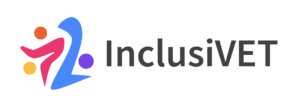Chapter 1 – Getting to Know Different Forms of Learner Engagement
Learner engagement is multifaceted and extends beyond classroom activities, playing a crucial role in fostering personal growth, community building, and practical skill development. Engaging in extracurricular and governance activities allows learners to apply their learning in real-world contexts, develop leadership skills, and build meaningful connections with other learners and staff.
Learner engagement requires a structured approach that supports learners across all domains that are relevant for a students’ learning experience. This means that learner engagement should not be limited to areas where their experience is most directly visible – such as learning resources and the learning & teaching process – but also to topics that are of equal importance to learners, such as learner assessment, guidance and quality assurance. The figure below shows the key areas that are relevant for the student learning experience and thus for effective learner engagement.
The different areas that comprise the student learning experience, as well as the overall student experience, can be grouped into four main domains where learner engagement should reasonably take place:
1. Governance and management
However, meaningful engagement in governance requires overcoming obstacles like hierarchical structures, decision-making cultures, and knowledge gaps. Non-formal forms of participation should also be recognised. Governance is a key domain where learner engagement can influence institutional policies, decision-making, and projects at all levels.
Student governance enables learners to take on leadership roles, such as serving as student body presidents, class representatives, or committee members. This involvement often extends to participation in institutional committees and boards.
2. Teaching & learning
Teaching and learning environments offer opportunities for active collaboration between learners and staff. For example, co-creating curriculum content with learners allows them to share their perspectives, ensuring that the course materials are relevant and engaging. This collaborative approach not only enhances the learning experience but also empowers learners by making them active participants in shaping their education. Engagement here can be pedagogical (enhancing teaching methods), curricular (shaping course content), and extracurricular (enriching learning experiences).
3. Quality Assurance
Active learner participation in quality assurance processes ensures that institutional practices meet the needs of all learners. Students should contribute to every stage of quality assurance, from providing feedback to co-developing improvements. Collaborative approaches empower both staff and students to create meaningful partnerships that enhance educational quality. The figure below illustrates the different ways in which learners can be involved in quality assurance, recognising the different ‘roles’ they can have there.
4. Life of the VET institution/student community
Extracurricular activities, including clubs, organisations, and cultural groups, play a significant role in fostering community and belonging. These groups cater to a range of interests, from professional development to cultural celebration, and create opportunities for students to connect and thrive.
